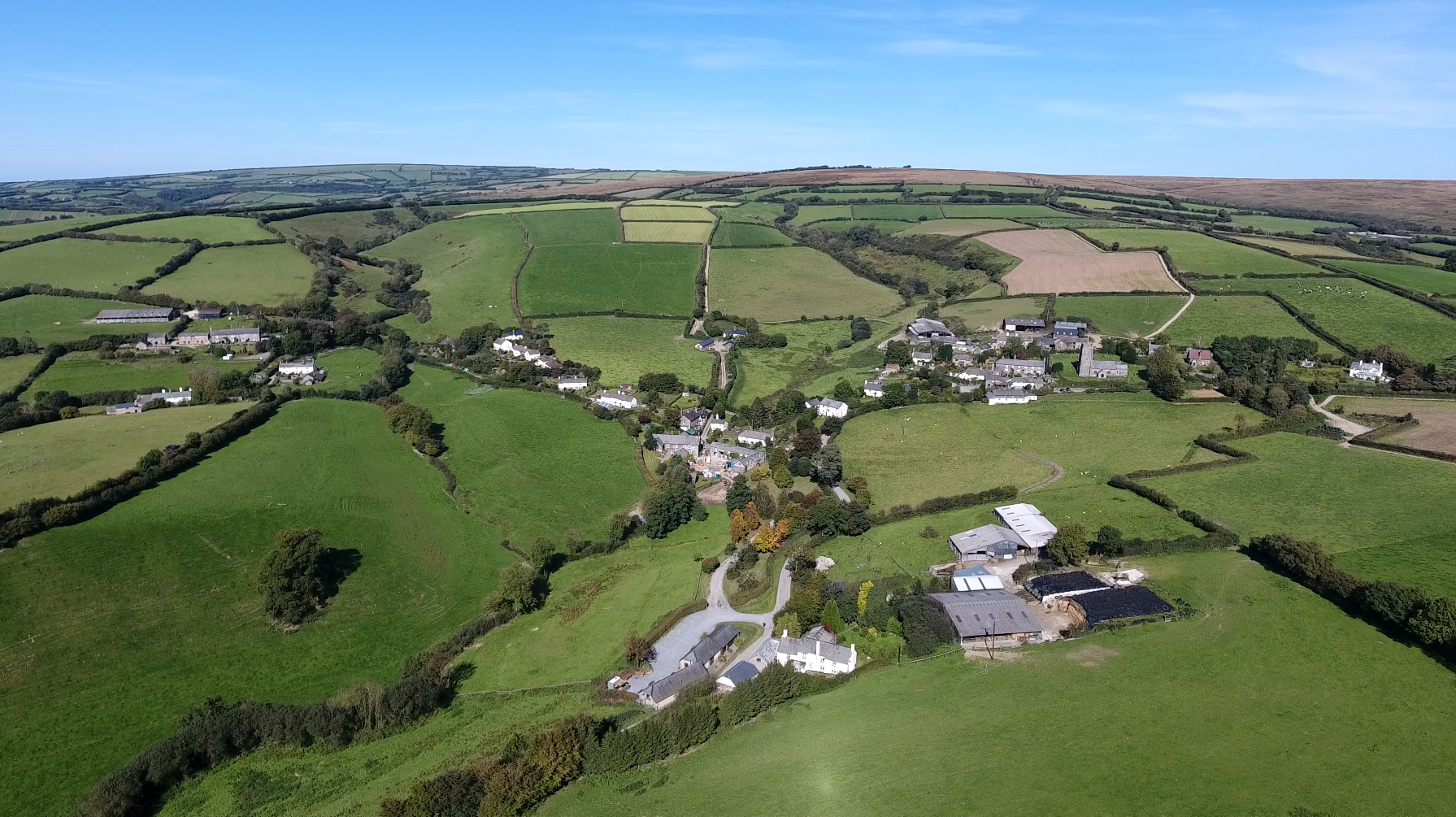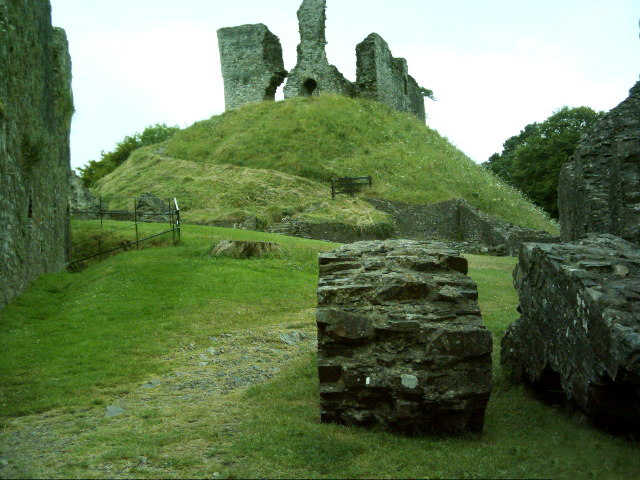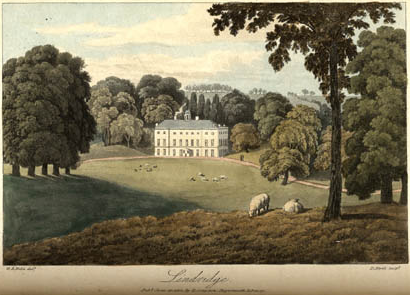|
Loughtor
Newnham Park (before ''circa'' 1718 Loughtor) is an historic estate in the civil parish of Sparkwell, Devon, UK. It was known as Loughtor until about 1700 when the ancient Strode family, long seated at Newnham, about 1 mile south-east of the manor house of Loughtor, abandoned Newnham and moved their residence to Loughtor (which they had inherited by a marriage in the 16th century) where they built a new mansion house which they renamed "Newnham Park". In 2014 the mansion house with an estate of about 1,550 acres is still owned by a descendant (via various female lines) of the Courtenay and Strode families which held the estate from the 15th century, and which were well established in the county of Devon long before that time. In 2014 part of the estate is operated as a commercial clay-pigeon shooting ground. Descent Sir William Pole (d.1635) relates the early holders of ''Loughtorre'' as follows: Le Abbé The first recorded holders of Loughtor was the family of Le Abbé ( ... [...More Info...] [...Related Items...] OR: [Wikipedia] [Google] [Baidu] |
Newnham (Old)
Newnham (since ''circa'' 1718 Old Newnham) in the parish of Plympton St Mary in Devon is a historic estate long held by the Devonshire gentry family of Strode. The ancient mansion house is situated 1 mile north-east of St Mary's Church, beside the Smallhanger Brook, a tributary of the Tory Brook, itself flowing into the River Plym. The house was abandoned by the Strode family in about 1700 when they built a new mansion on the site of Loughtor Manor House, about 1/3 mile to the north-east of Old Newnham. Monuments to the Strode family survive in St Mary's Church, Plympton, including the canopied stone effigy of Richard Strode (d.1464), showing a recumbent knight clad in armour. The mural monument of William II Strode (d.1637) and his family shows him kneeling with his two wives on either side and ten children below. The kneeling effigy mural monument to his daughter Ursula Strode, the wife of Sir John III Chichester of Hall, North Devon, survives in Bishop's Tawton Church. A ... [...More Info...] [...Related Items...] OR: [Wikipedia] [Google] [Baidu] |
Manor Of Molland
The Manor of Molland was a medieval manor in North Devon, England. It was largely co-terminous with the existing parish of Molland, in which is situated the village of Molland. More accurately it consisted from the earliest times of two separate manors, held from separate overlords, later known as ''Molland-Bottreaux'' and ''Molland-Champson''. Descent of the manor The Exeter Domesday Book of 1086 records three entries for manors called "Molland", two in South Molton hundred and one in North Molton hundred. The latter does not relate to today's village and estate of Molland, but to a separate ancient small manor later called "Molland-Sarazen", about 7 miles to the NW, in today's parish of North Molton, and now memorialized by the name of Higher Molland Farm and Molland Cross nearby it. This manor in North Molton hundred was held by Tetbald, son of Berner, who was the father-in-law of Odo. The two entries for Molland in South Molton hundred relate to a former ancient div ... [...More Info...] [...Related Items...] OR: [Wikipedia] [Google] [Baidu] |
William Strode (poet)
William Strode (c. 1602 – 1645) was an English poet, Doctor of Divinity and Public Orator of Oxford University, one of the Worthies of Devon of John Prince (d.1723). Origins He was born in Devon and baptised on 11 January 1602/3 (probably at the age of one) at Shaugh Prior, about 4 miles north of Newnham, the ancient seat of the Strode family. He was the only son of Philip Strode (d.1605) by his wife Wilmot Hoghton, daughter of William Hoghton (''alias'' Houghton) of Hoghton Tower, Lancaster. Philip Strode was the 4th son of William III Strode (1512–1579) of Newnham, Plympton St Mary, Devon, by his wife Elizabeth Courtenay, daughter and heiress of Philip Courtenay of Loughtor, a younger son of Sir Philip Courtenay (d.1488) of Molland in North Devon.Vivian, p.251 & 718 Education He was educated at Westminster School and Christ Church, Oxford. He began writing English and Latin verse at an early age; his first published work was a Latin poem in the collection ''Annae Fun ... [...More Info...] [...Related Items...] OR: [Wikipedia] [Google] [Baidu] |
Okehampton Castle
Okehampton Castle is a medieval motte and bailey castle in Devon, England. It was built between 1068 and 1086 by Baldwin FitzGilbert following a revolt in Devon against Norman rule, and formed the centre of the Honour of Okehampton, guarding a crossing point across the West Okement River. It continued in use as a fortification until the late 13th century, when its owners, the de Courtenays, became the Earls of Devon. With their new wealth, they redeveloped the castle as a luxurious hunting lodge, building a new deer park that stretched out south from the castle, and constructing fashionable lodgings that exploited the views across the landscape. The de Courtenays prospered and the castle was further expanded to accommodate their growing household. The de Courtenays were heavily involved in the 15th century Wars of the Roses and Okehampton Castle was frequently confiscated. By the early 16th century the castle was still in good condition, but after Henry Courtenay was executed ... [...More Info...] [...Related Items...] OR: [Wikipedia] [Google] [Baidu] |
Lindridge House
Lindridge House was a large 17th-century mansion (with 20th-century alterations), one of the finest in the south-westBeckett situated about 1 mile south of Ideford in the parish of Bishopsteignton, Devon, about 4 1/2 miles NE of Newton Abbot. It was destroyed by fire on 25 April 1963 and its ruins were finally demolished in the early 1990s, upon which was built a housing development. The gardens have been restored and are Grade II listed in the National Register of Historic Parks and Gardens. Descent Bishops of Exeter The site of Lindridge House is situated 1/2 mile NW of the church in the parish of Bishopsteignton.Pevsner, p.185 Dudley After the Dissolution of the Monasteries, in 1549 the estate was acquired by Sir Andrew Dudley, KG (c. 1507 – 1559), a soldier, courtier (Groom of the Bedchamber) and diplomat, and a younger brother of John Dudley, 1st Duke of Northumberland. He held it only for a short period. Duke In 1550 Dudley sold "Lyndrygge" to Richard Duke (c. 1 ... [...More Info...] [...Related Items...] OR: [Wikipedia] [Google] [Baidu] |
Lear Baronets
Two baronetcies both created for Peter Lear, West India merchant Lear of London The Baronetcy of Lear of London was created in the Baronetage of England on 2 July 1660 for Peter Lear. The baronetcy became extinct upon his death about 1684. Lear of London (1660) * Sir Peter Lear, 1st Baronet (died c.1684) ''Extinct on his death'' Lear of Lindridge The new Baronetcy of Lear of Lindridge was created in the Baronetage of England on 2 August 1683 for Sir Peter Lear of London, Baronet, whose Devon residence was Lindridge House, Bishopsteignton, with a special remainder to his nephews, he being without issue. His eldest nephew was Thomas Lear of Lindridge Devon, MP for Ashburton. The baronetcy became extinct upon the death of his brother the third Baronet in 1736. Lear of Lindridge (1683) * Sir Peter Lear, 1st Baronet ''Sir'' is a formal honorific address in English for men, derived from Sire in the High Middle Ages. Both are derived from the old French "Sieur" (Lord), ... [...More Info...] [...Related Items...] OR: [Wikipedia] [Google] [Baidu] |
John Prince (biographer)
Rev. John Prince (1643–1723), vicar of Totnes and Berry Pomeroy in Devon, England, was a biographer. He is best known for his ''Worthies of Devon'', a series of biographies of Devon-born notables covering the period before the Norman Conquest to his own era. He became the subject of a sexual scandal, the court records of which were made into a book in 2001 and a play in 2005. Origins John Prince was born in 1643 in a farmhouse (now called Prince's Abbey) on the site of Newenham Abbey, in the parish of Axminster, Devon. He was the eldest son of Bernard Prince (died 1689) (to whom John erected a monument in Axminster Church) by his first wife Mary Crocker, daughter of John Crocker,Courtney, William Prideaux. " Prince, John (1643–1723)", ''Dictionary of National Biography'', London, 1885–1900, Volume 46. of the ancient Crocker family seated at Lyneham House in the parish of Yealmpton, Devon. Lyneham was, after ''Hele'' the second earliest known home of the Crocker family, one ... [...More Info...] [...Related Items...] OR: [Wikipedia] [Google] [Baidu] |
Worthies Of Devon
This is a list of persons considered by John Prince (1643–1723) sufficiently notable to warrant the inclusion of their biography in his work ''The Worthies of Devon''. ''The Worthies of Devon'' While at Berry Pomeroy, John Prince worked on his magnum opus: a biography of his home county's many notable figures, which he probably finished in 1697. The book ran to 600 pages, with woodcuts to illustrate the 191 biographies. He struggled to find funding for it; most publishers able to handle such a large book were based in London or Oxbridge. The printer was forced to advertise for subscribers while the book languished for four years until its first publication in 1701. It is evident that Prince was over-ambitious in his work. The alphabetical entries from A to H fill half the book, while L to Z are squeezed into the final quarter, as money problems took their toll on his inclusions. A second volume, detailing 115 entries chosen by Prince to redress the balance, was never publishe ... [...More Info...] [...Related Items...] OR: [Wikipedia] [Google] [Baidu] |
Oxford University
Oxford () is a city in England. It is the county town and only city of Oxfordshire. In 2020, its population was estimated at 151,584. It is north-west of London, south-east of Birmingham and north-east of Bristol. The city is home to the University of Oxford, the oldest university in the English-speaking world; it has buildings in every style of English architecture since late Anglo-Saxon. Oxford's industries include motor manufacturing, education, publishing, information technology and science. History The history of Oxford in England dates back to its original settlement in the Saxon period. Originally of strategic significance due to its controlling location on the upper reaches of the River Thames at its junction with the River Cherwell, the town grew in national importance during the early Norman period, and in the late 12th century became home to the fledgling University of Oxford. The city was besieged during The Anarchy in 1142. The university rose to domina ... [...More Info...] [...Related Items...] OR: [Wikipedia] [Google] [Baidu] |
Dittisham
Dittisham is a village and civil parish in the South Hams district of the English county of Devon. It is situated on the west bank of the tidal River Dart, some upstream of Dartmouth. The Greenway Ferry carries pedestrians across the river from Dittisham to Greenway Quay, adjacent to the Greenway Estate. Once the home of the crime writer Agatha Christie, this has views across the river, and the house and gardens are now owned by the National Trust and are open to the public. Gurrow Point is a private estate on the edge of Dittisham. In 2001, the parish had a population of 424. The equivalent figures for 1801 and 1901 are 639 and 549. Dittisham has given its name to the Dittisham plum, a dessert variety grown here. The fictitious Lady Dittisham is one of the main characters In Agatha Christie's ''Five Little Pigs''. Historic estates The parish of Dittisham contains various historic estates including: *Bosum's Hele (alias Bozun's Hele, Bozunsele, etc., modern: "Bozomzeal") ... [...More Info...] [...Related Items...] OR: [Wikipedia] [Google] [Baidu] |
Richard Strode (died 1581)
Richard Strode (22 May 1528 – 5 August 1581), of Newnham (Old), Newnham, in the parish of Plympton, Plympton St Mary in Devon, was an English Member of Parliament for Plympton Erle (UK Parliament constituency), Plympton Erle in 1553 and 1559. He later served as List of office holders of the Duchy of Cornwall#Feodary (Escheator) in Cornwall and Devon (1403–1632), escheator for Devon and Cornwall from 1565–1566. He was the eldest son of William Strode of Newnham, Devon and Elizabeth, daughter of Philip Courtenay. He married, on 11 November 1560, Frances (died 7 February 1562), daughter of Gregory Cromwell, 1st Baron Cromwell and Elizabeth Seymour, Lady Cromwell, Elizabeth Seymour by whom he had a son: William Strode (1562–1637), William Strode (1562–1637) Strode died on 5 August 1581, two years after his father, leaving landed property worth over £60 ''per annum'' to his son and heir, William, then aged nineteen. Notes References * * * 1528 births 1581 deat ... [...More Info...] [...Related Items...] OR: [Wikipedia] [Google] [Baidu] |



